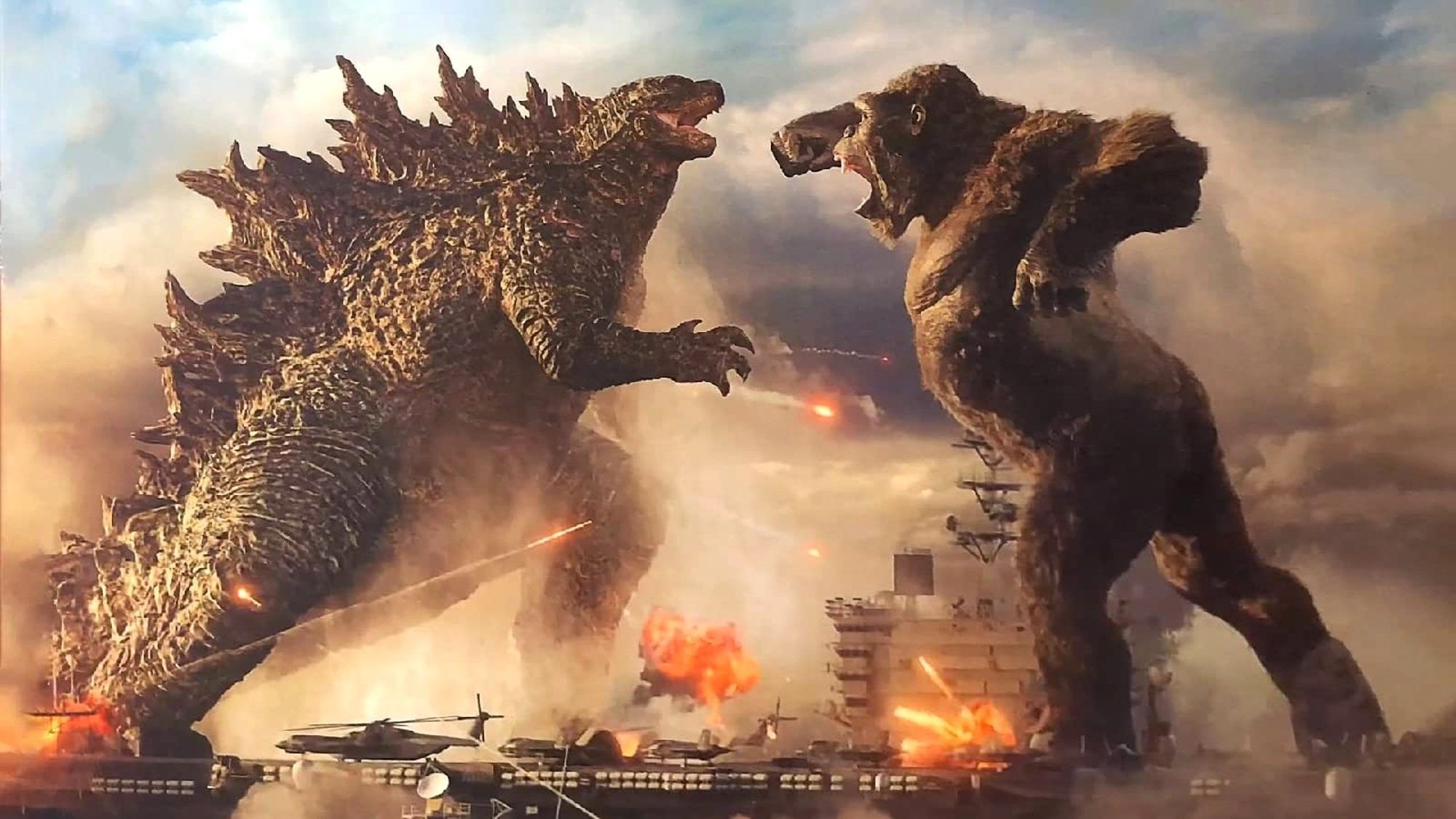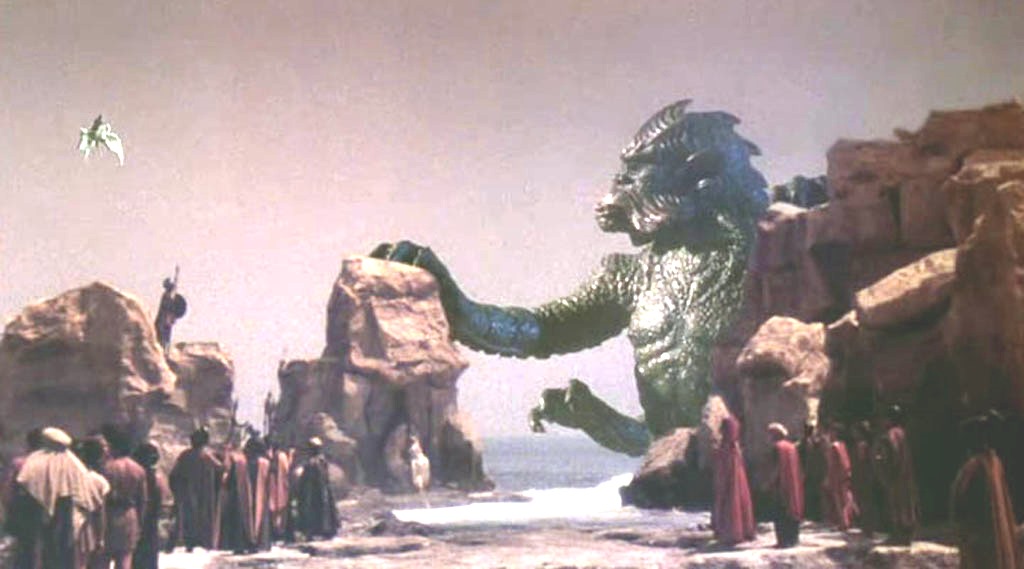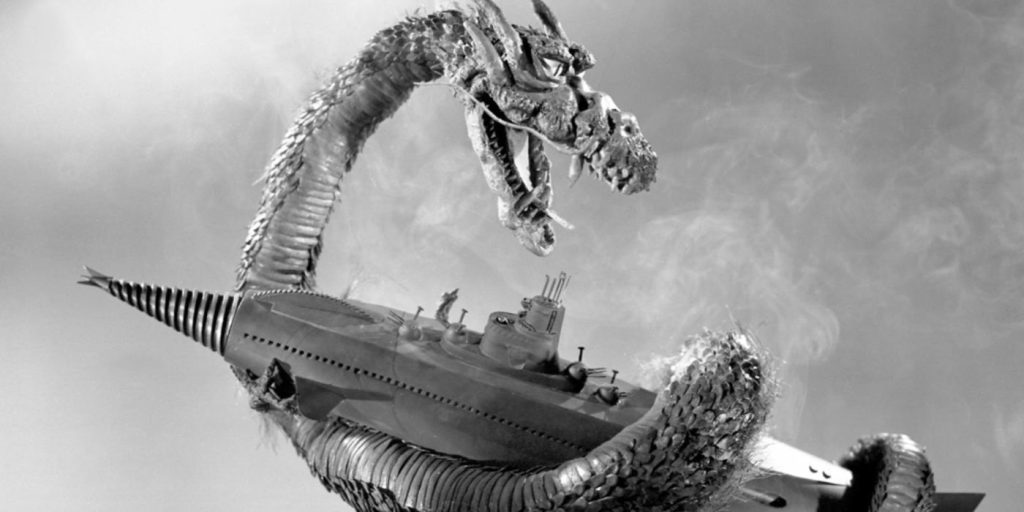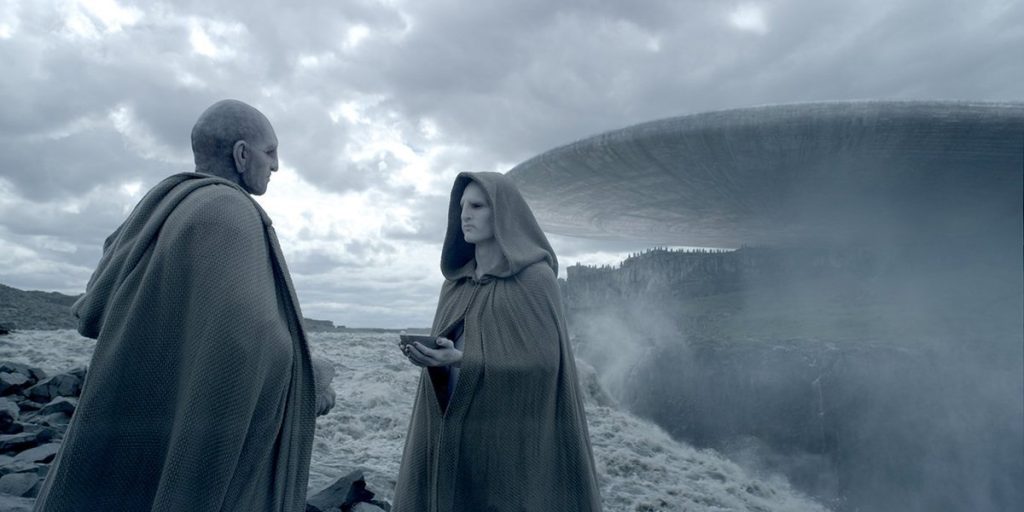
Like everybody else, I grew up with a little Godzilla, but I’d never got around to watching the original black and white movie that got the ball rolling – Godzilla (1954). The movie has many limitations as well as redeeming features, but that’s not quite what interests me today.
By Emad Aysha
I’d watched a Youtube video by The 5th Kind, discussing ancient aliens, and the speaker insisted that we have common myths and artistic constructions in our history because our brains are accessing some long-forgotten source of information, either genetically or by some other means.
I’ll leave the science stuff in the video to the scientist (see below) and as a devout Muslim, I don’t believe God-is-an-astronaut… but! The mythology point struck a chord more so after watching Godzilla.
There’s a scene early in the movie where the fishermen claim that the absence of fish in the past was attributed to the sea monster, and that the way they dealt with this problem was by sacrificing young girls to the beast.
That’s what struck a chord. That’s nearly identical to what you see in Clash of the Titans (1981), where they have to sacrifice the unwed princess to the Kraken to placate the anger of the gods.
I had actually wondered about the similarities between Godzilla and the Kraken before, given that the monster in the Greek myth flattens cities by pushing up a massive tidal wave, and that struck me as primitive science on the part of the ancients.

COASTAL PATROL: A screenshot of the Kraken from the classic Clash of the Titans. Plato always said ancient Greece was a frogpond!
They had no idea the Earth was a sphere or any notion of the tides, of the gravitational pull of the moon acting on the sea level. To them, the sea is a giant aquarium, and so you’d need something inside it to push the water and make waves.
The Chinese seem to have a similar theory regarding dragons and waves, as well as storms at sea. But even so, there is an uncanny resemblance between the price the Kraken demands and that paid to Godzilla in Japanese legend. The Japanese have their equivalent of Atlantis, with the underwater Mu civilisation in Atragon (1963), located in the Pacific, which disappeared 10,000 years ago, with its sights set on global domination through its superior technology. And Plato’s legendary Atlantis was also supposed to be technologically advanced, oppressive, and ultimately doomed to a similar miserable fate. (There’s also a sea serpent in Atragon.)
Another coincidence? Then there’s the curious way the Chinese invented flying, almost by accident. A ruthless Chinese emperor forced captors to wear bamboo wings and pushed them off the wall of a fortress, but in the process, the first hand glider was invented.
That’s near identical to the story of Daedalus, the inventor, and his tempestuous son Icarus, who escaped their fortress prison by flying with wax wings laced with feathers. But typically, he got too close to the sun, the very source of the knowledge and science that made his father’s work possible, and the wax melted, and he fell to his death.
Science is both a saviour and a destroyer. Those themes are certainly present in this first iteration of Godzilla. It's man’s arrogance, with atomic tests under the water, that disturbs the beast and forces it up in search of food. And it's science that defeats it, a horrible discovery made by a scientist playing around with oxygen bonds.

CONTINENTAL MENACE: A screenshot from 'Atragon' (1963). There's always a twist in the tale when it comes to the exact location of Atlantis.
The scientist hid his discovery, terrified that even if it killed Godzilla, governments around the world would weaponise it like nuclear fission and destroy humanity. Even when he agrees to use it on Godzilla, he makes sure to burn all his papers and kill himself along with the beast to stop somebody from exploiting the invention.
These coincidences are becoming uncanny, and you are beginning to suspect that humanity was more advanced than we can fathom in the distant past, and that some remnants of this past have survived in myth. Consider the latest discoveries, such as evidence of Noah’s arch in an ancient Babylonian map (along with references to flightless birds and undrinkable water surrounding the circular Earth).
The central stone of Stonehenge has now been found to be from Scotland, which means Neolithic Britain was both more advanced and more centralised than we’d ever thought. And there are alternative explanations to contend with, too. One is the ancient aliens thesis mentioned above, popularised most famously by Erich von Däniken, where extraterrestrials came to earth and either shared information with us, bred or modified us, enslaved us or just inspired us through example.
Ancient astronauts is an older theory than people realise, with a Russian scientist like Mates Agrest (1915-2005). Vladimir Shcherbak and Maxim Makukov have even postulated that searching for SETI signals (radio waves) from outer space as evidence is a waste of time, with a more promising avenue being the mathematical patterns in DNA and other chemical traces of aliens that may have seeded life on Earth in the geological past.
Another explanation proposed by some scientists, however, is that there may have been older, intelligent races on Earth before humans. Life on Earth has existed for an incredibly long time, and there’s no reason why evolution couldn’t work its wonders with previous animals in different geological eras before humans.

ANCIENT AGNOSTICS: A deleted scene from 'Prometheus' (2012). The engineer is in a Druid outfit, a Stonehenge association. Given the new Scottish discovery, could the pundits have got it right for once?
This is the Silurian hypothesis, a thought-experiment designed to test for traces of lost civilisations on other worlds by examining how we could determine if a previous industrial civilisation had once existed on Earth. (Even scientists who don’t subscribe to this theory find it intriguing and insist on keeping an open mind; see this NBC item.)
... TO BE CONTINUED
